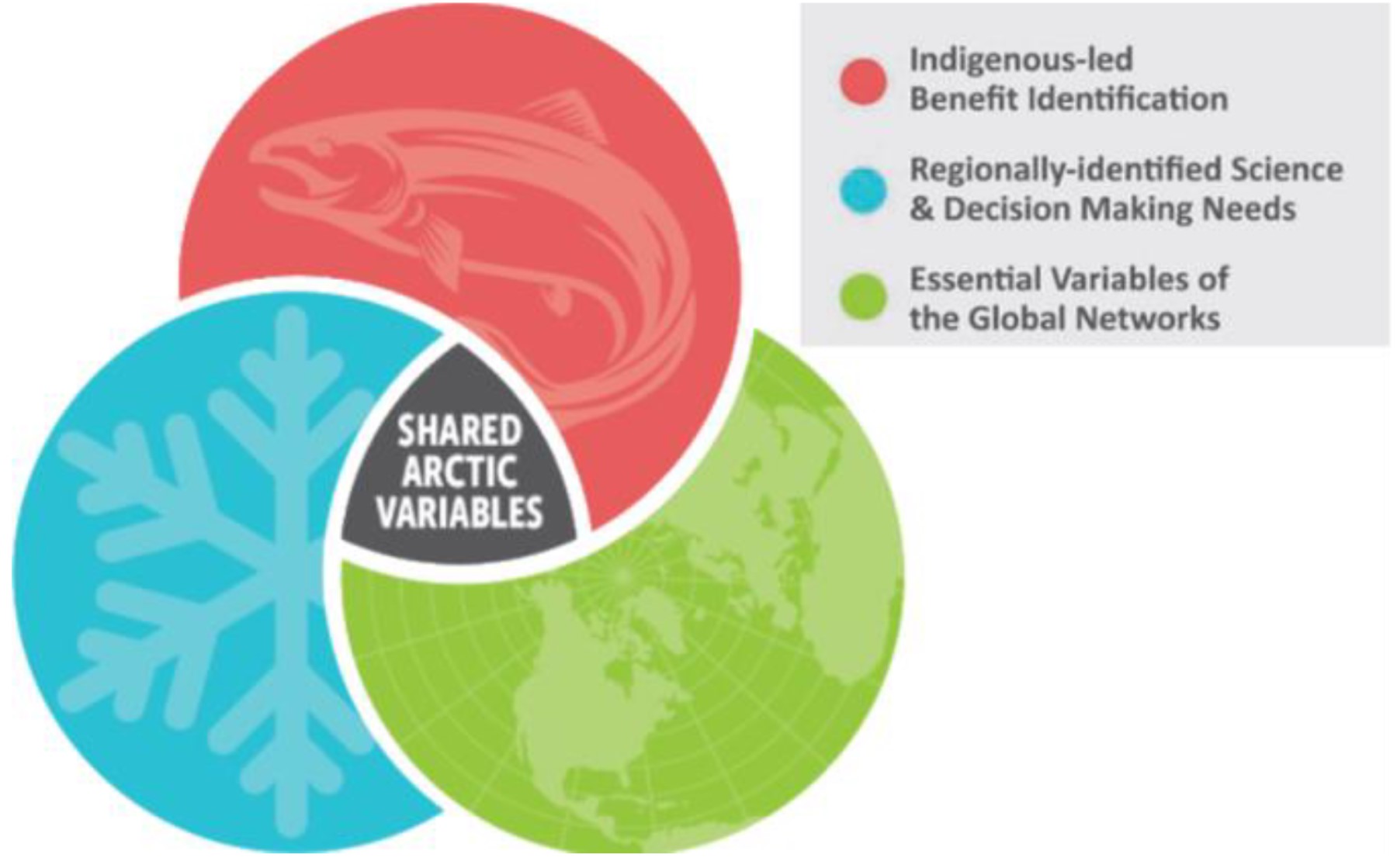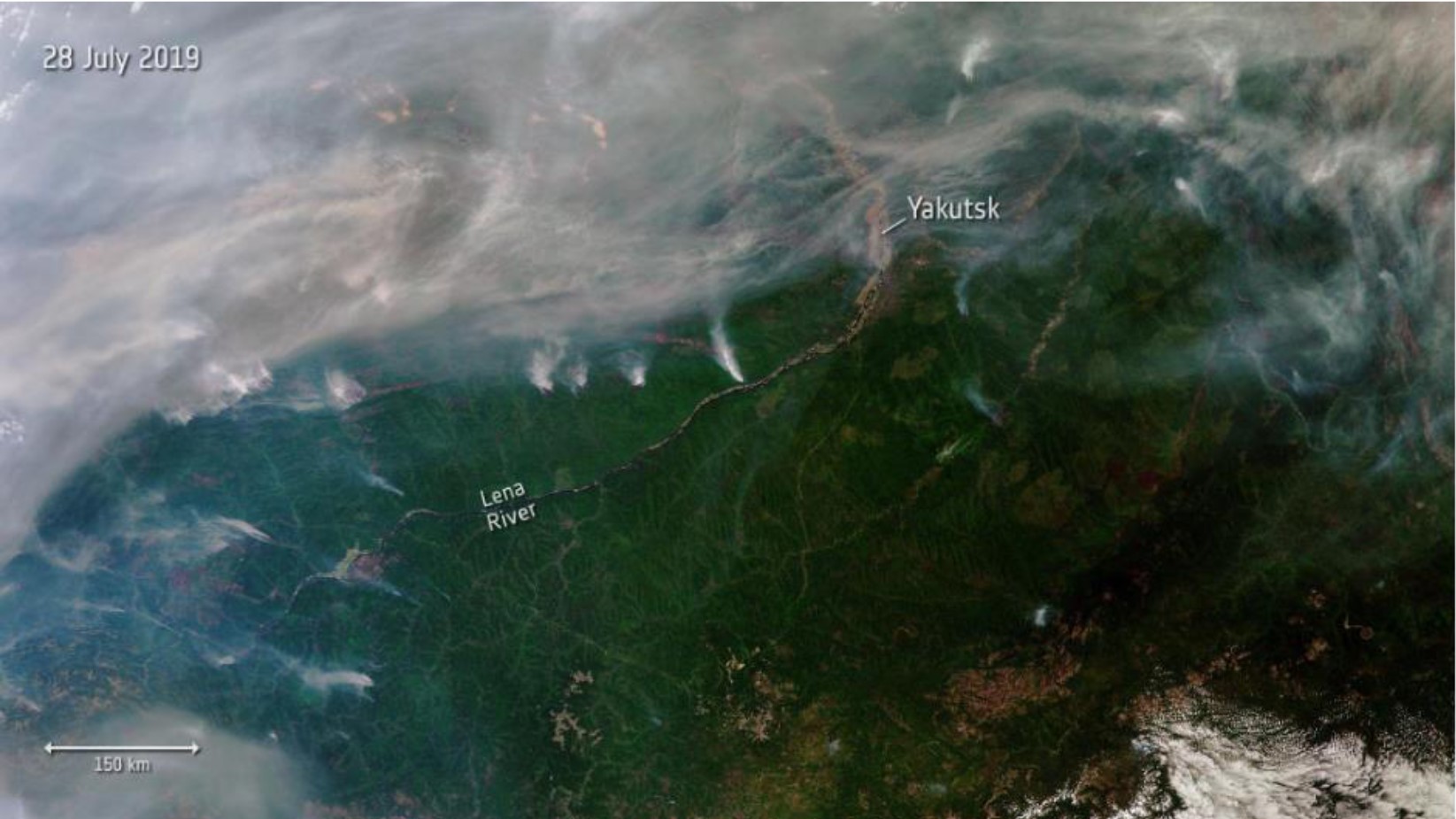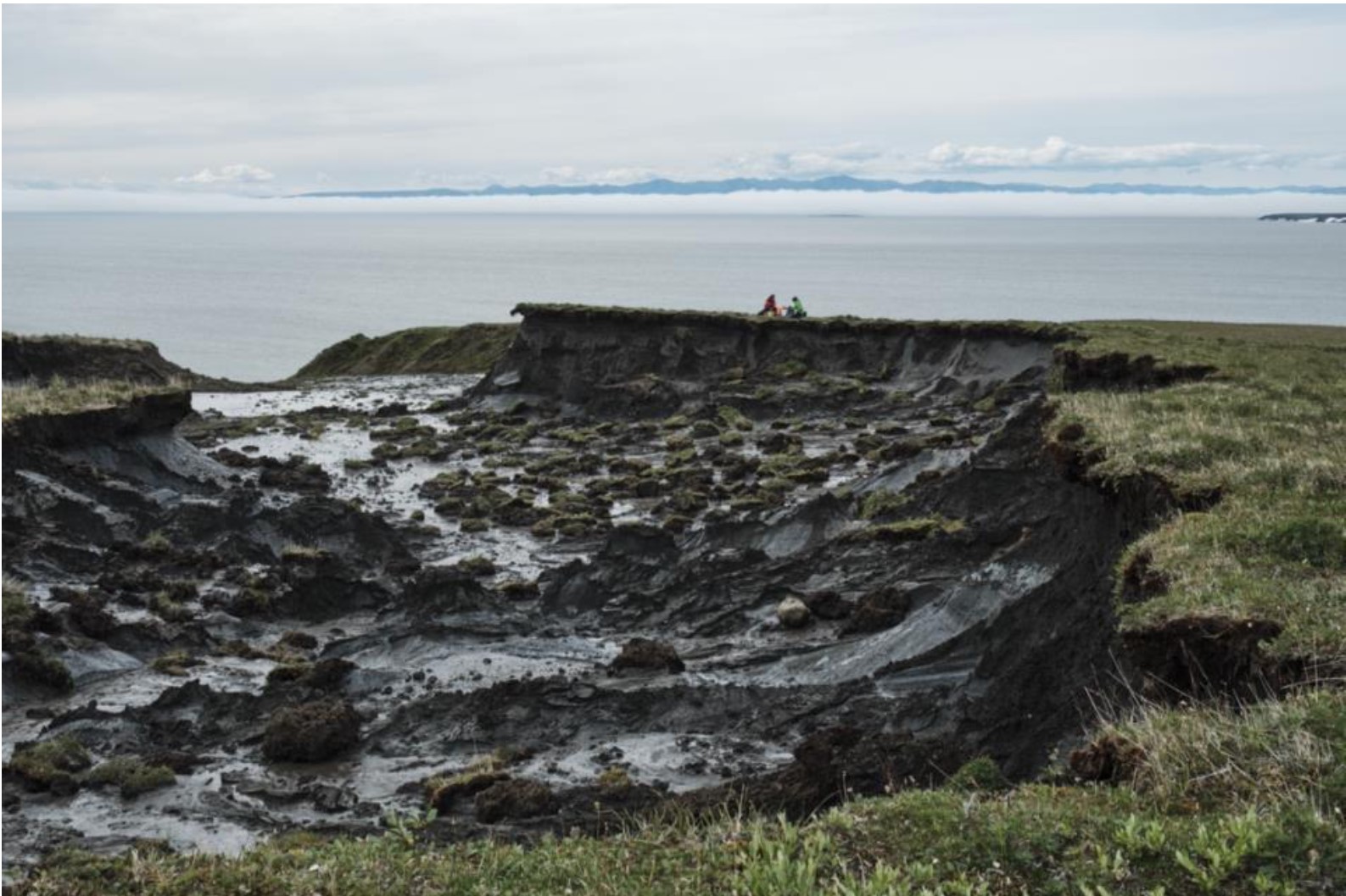People living in the Arctic are facing a rapidly changing environment and increasing human activity in the region. Observations inform actions in the face of these changes, but observing system design and coordination approaches developed for more focused networks at mid- and low latitudes are not necessarily directly applicable in more complex Arctic settings. Requirements for these are more demanding, not only because logistics and operating conditions in these regions are more challenging, but also due to a greater need for cross-disciplinary and cross-sector prioritization and refinement from the local to the pan-Arctic scale.
The concept of Shared Arctic Variables (SAVs) emerged from the Arctic Observing Summit 2020 and work by the Sustaining Arctic Observing Networks (SAON) as an attempt to define sets of observables that can help to solve problems on a local or regional scale in the Arctic. SAVs align with “Essential Variables (EVs)” as defined by global observing frameworks, in that they guide coordinated observations across phenomena of interest to multiple sectors. SAVs are responsive to the information needs of everyone affected by the rapid changes taking place in the Arctic, including Indigenous people and organizations, northern communities, operational agencies, academia, industry and government.
The idea is to draw on the capacity of all the communities to co- design and co-manage observing efforts by gathering representatives from each into thematic Expert Panels, and to include Indigenous and Local Knowledge as well as science into the process (see Fig. 1). One important aspect of the SAV approach in contrast to the one for EVs is its focus on the local or regional scale needs and the key role of Indigenous and local communities in identifying sets of observables that would help in solving issues - an approach that has the potential to be a source of empowerment for those Arctic communities.
The entire concept of SAV expert panels, as guided through SAON and its ROADS process, has only recently been developed. Two research and networking projects have stepped forward to pilot the process: the US project RNA CoObs and EU project Arctic PASSION jointly with partners from Canada.
Shared Arctic Variables in Arctic PASSION
In Arctic PASSION currently, three Expert Panels, formed around three relevant themes with observation needs, are in the process of convening to provide input for defining SAVs. This includes impact and priority, spatial and temporal resolution, accuracy requirements, period, comparability, required commitment for observations, requirements for engaging and supporting Community Based Monitoring efforts. The Expert Panels will have diverse membership, combining the knowledge of Arctic community members and organizations, local experts, scientists from within and outside of Arctic PASSION, and those with decision-making and policy expertise (Fig.1). Each Expert Panel will develop a specific plan to support decision making, including the who, what, where, why, how, and when. Part of the mission for the Expert Panels is to recommend the sets of observables as SAVs to the SAON Advisory Panel, set up by SAON as part of its ROADS process (Fig. 2).

Figure 1: An ideal SAV would realize community-identified benefits in Indigenous communities (light red), support understanding of Arctic systems and regional decision-making needs (blue), and inform science and decision-making needs at the global scale and integrate with operational global networks (green). Modified from Starkweather et al. 2022.

Figure 2: Schematic overview of the development of Shared Arctic Variables (SAVs) in a dialogue with the ROADS Advisory Panel.
Recent developments in Arctic PASSION SAV themes
The three proposed themes under which SAVs will be identified are: Permafrost, Wildfires and Sea ice. We have
chosen them as they are significant to lives and activities on local and regional scales, as well as being connected to pilot services being developed in the Arctic PASSION project as part of work package 4:
SAV definition based on the theme ’Permafrost - Living on frozen ground’
A first group of experts met, with expertise ranging from Indigenous Knowledge, effects of permafrost changes on human health, impacts of permafrost, changes to infrastructure in local communities, and several people from academic institutions. A concept document on permafrost-relevant SAVs was developed as a result of these discussions, and is expected to eventually provide the basis for suggesting one or more SAVs definitions to the SAON ROADS Advisory Panel (Fig. 3).
Figure 3: Processes which disturb the landscape surface reveal the extent of ice-rich permafrost underlying the active layer on the Yukon Coastal Plain on Qikiqtaruk, Herschel Island, Yukon, Canada. Photo taken by Weronika Murray during the AWI expedition Yukon Coast 2022.
SAV definition based on the theme ’Wildfires’:
The past few years have seen a dramatic increase in the frequency and intensity of extreme wildfire events in the Arctic impacting communities and ecosystems. Defining wildfires as one of three themes to identify SAVs allows for connecting different communities affected by these changes, their information needs and ways of monitoring their state and changes. Two regional starting points for wildfires have been identified: Finland and North America. Two expert panels are therefore being developed in parallel. The Scandinavian/Finland Expert Panel organised a workshop in 2022 to perform step 1 (Fig. 4) in the SAV process and produce a concept paper. The North American Expert Panel is starting to take shape, with contacts with Parks Canada, the University of Fairbanks, Gwich’in Council International and the Prepare Our Home programme.

Figure 4: Satellite image of wildfires in Siberia (Photo: ESA).
SAV definition based on theme ’Sea Ice’:
The development of the Sea Ice EP has strated with the Canadian partners in Arctic PASSION taking the lead in launching the process and including efforts to secure additional funding to support the activities of the expert panel. The Canadian team developed a timeline of initial activities and meetings, and compiled a list of expert categories relevant to the sea ice theme (i.e., indigenous ice expert, sea ice geophysicist, ice service representative, etc.) to start gathering the initial list of potential participants. In addition, it has begun the development of a Sea Ice SAVconcept document to share with the community at the upcoming Arctic Science Summit Week 2023.
Beyond Arctic PASSION: legacy of SAVs
Arctic PASSION’s contributions to an improved pan-Arctic Observing System of Systems will continue
operation beyond the project, and SAVs have a key role in guiding its development. To ensure a smooth transition after the completion of the project, the Expert Panels will collaborate with the SAON ROADS Advisory Panel to identify stewards for the SAVs.
International collaboration
An objective of ROADS is to be a framework for partnership development and planning convergence. The work within Arctic PASSION has until now been successful in contributing to this objective and has managed to establish partnerships, also beyond Arctic PASSION’s original geographical and institutional scope. The European partners in Arctic PASSION cover a wide range of national institutions engaged in Arctic research and observing from all parts of Europe including operational institutions like national and meteorological and sea ice services and also with a series of regional, global, and private institutions. The Canadian partners workto bring relevant national organisations into the workas appropriate and have focused on engaging the Canadian Ice Service and partners in the Canadian Consortium for Arctic Data Interoperability (CCADI). The collaboration with US partners has mainly been through the NSF-funded Research Networking Activities for Sustained Coordinated Observations on Arctic Change (CoObs RNA). The objective of the project led by the University of Alaska, Fairbanks, is to support coastal and marine food security for Arctic residents, especially in the Bering Sea area. Partners in the project include Alaska Ocean Observing System (AOOS), the Arctic Institute of North America (AINA), the National Institute of Polar Research (Japan), and a significant list of Canadian, European and US universities and research institutions. In addition to the collaboration with and among institutions, especially the SAVEPs have also been successful in engaging Indigenous and local partners.Arctic PASSION is a significant partner in the effort of pioneering the ROADS process as a framework for establishing an Arctic observing system of systems.

You can follow the progress of work on Shared Arctic Variables here.





